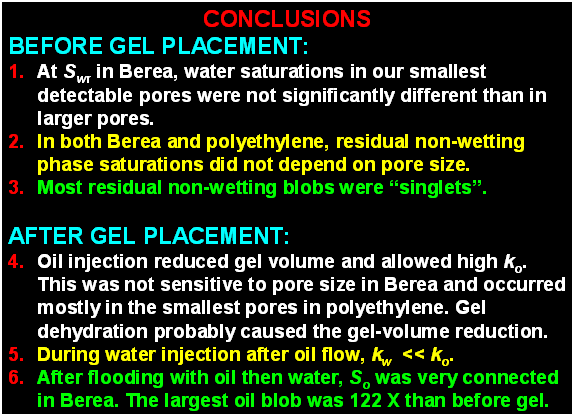Conclusions
We used X-ray computed microtomography to determine why a Cr(III)-acetate-HPAM gel reduces permeability to water more than that to oil in water-wet Berea sandstone and oil-wet porous polyethylene cores. The following conclusions were reached.
- During the transition from Swr to Sor in Berea before gel placement, pores in all detected size ranges experienced significant gains in water saturation. Pore size did not significantly influence the extent of the transition
- In contrast, in polyethylene before gel placement, oil was largely immobile in smaller pores.
- Injection of 20-cp gelant mobilized oil in both porous media even though the pressure gradients during gelant placement were less than those during previous floods.
- Immediately after gel placement, an extremely high resistance to water flow occurs (in either Berea or polyethylene) because impermeable gel occupies nearly all of the aqueous pore space.
- During oil flow after gel placement in Berea, much of the gel was reduced in volume—leading to a relatively high permeability to oil.
- At Sor after gel placement in Berea, 93.3% of the pores had higher oil saturations than at Sor before gel placement. The overall Sorin Berea jumped from 18.4% before gel placement to 51% after. The greater level of trapped oil greatly restricted water flow.
- In polyethylene, reduction in gel volume occurred mainly in small pores.
- The above observations suggest that reduction in gel volume in Berea sandstone and porous polyethylene was probably caused by a dehydration mechanism rather than a gel-ripping mechanism.
- In contrast, data from other researchers supports ripping or extrusion mechanisms for creating oil pathways in high-permeability sand packs.
